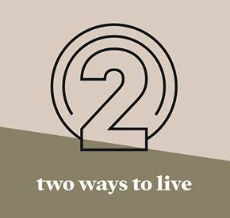A hole in History the shape of an empty tomb
Posted on April 6, 2013
Filed under Australia, Opinion
 We missed seeing this earlier – but Ian Palmer, the new Bishop of Bathurst, has written this Easter message in the April edition of 3D, the newspaper of the dioceses of Canberra & Goulburn, Bathurst, and Riverina. (Page 14 in this PDF file.)
We missed seeing this earlier – but Ian Palmer, the new Bishop of Bathurst, has written this Easter message in the April edition of 3D, the newspaper of the dioceses of Canberra & Goulburn, Bathurst, and Riverina. (Page 14 in this PDF file.)
It’s also a good reminder to pray for him and for Christian ministry in rural areas —
“Almost 40 years ago, in July 1973, Liz and I were in a bank in London when four armed men burst in.
We found ourselves lying on the floor fearfully eyeing the man standing over us with a shotgun, while his companions smashed their way into the tellers’ area and stole money from behind the desk and the safes.
It was a terrifying experience and although we eventually got out unharmed, all these years later the details remain vivid and the emotions powerful.
When I read the gospel stories of the discovery of the empty tomb of Jesus by the women and then the male disciples on that first Easter morning I sense a similar recollection of detail and raw emotion. The graphic memories of the stone rolled away, the empty tomb and folded grave clothes, and then heir emotions of shock, fear, excitement, curiosity, wonder and the feelings of entering the unknown; all come through in the witness of those first Christians.
Jesus’ grave is empty, Christ is risen! At first the accounts were passed on by word-of- mouth, and then in writing. The disciples recounted from their own experience that this is what had happened – they remembered it! It was indelibly printed on their minds for the rest of their lives.
In one sense the resurrection of Jesus has left a hole in history the shape of his empty tomb. As an enquiring “20-something-year-old”, I pored over the gospels and other writings and became convinced that the faith of the church is indeed founded on an event that happened in Palestine nearly 2000 years ago when God raised Jesus from the dead leaving the grave empty.
But the resurrection of Jesus is much bigger than an historical event. It is the support for the Creedal affirmation that Jesus Christ is Lord (see Romans 1:4; 1 Corinthians 15:3-26; Philippians 2:5-11; 1 Peter 1:3-4)). The apostles Paul and Peter proclaimed it as the pivotal event: it happened, but is beyond time. It is the central point of their gospel “Good News” (Acts 2:36; 10:39-43; 17:22-31).
The Gospel writers describe it as a new creation (see John 20). It is not just a unique event within this world, but the defining event of God’s new creation – a new world which is being born with Jesus.
If the resurrection is simply an odd event in the first century, then we in the 21st Century will go around looking for miracles today. If the resurrection of Jesus is the end or climax of the world, taking place in the middle of history then his death and resurrection is unrepeatable. However, because of Jesus, the life that we live can be viewed completely differently and HOPE is born. In other words we will see, as the New Testament writers saw, that the life of the believer is shaped by the Easter mystery.
Jesus has written the song and the music, but we play and sing it ourselves.
We will face exile, pain, dislocation, betrayal and even death because we know that the Lord on whom we rely calls us to implement his unique achievement.
We will live as people who know that through the empty cross and empty tomb, sin is forgiven, death is defeated and God’s new creation has begun. We will trust the God of hope and even though the way is difficult beyond measure we will experience joy and peace, as we trust in him (Romans 15:13).
We are Easter people and Resurrection is our song!”
